Bolt-on emotion: Romanticism part 2
English Romanticism trickles through into mountain writing of today [1300 words 6 mins
In last week’s post, I went on about how hill-climbing was an essential aspect of English Romanticism, as invented by Coleridge and the Wordsworths in 1798. This time, I’m talking about just how far the Romantics’ cult of The Feelings has penetrated into the climbing writing of today.
In writing about various old-time mountain writers (plus the occasional maker of movies) I've come down rather hard on what could be called the British tradition, where emotion is expressed, if at all, with a silent handshake.1 Come down hard but with a certain affectionate respect, as for an iceslope where even with crampons you have to stop and cut out steps with the axe. And the opposite of all this is what, if I didn't mind being xenophobic, I could call the American contemporary: emotion laid on, as it were, with a lightweight plastic poo trowel.2 This is the emotional equivalent of a soggy afternoon snowfield, where you sink in to the knees. A sort of bolt-on emotion where what you say doesn't actually have to make sense, it just has to sound as if it does.
Why are we up this hill anyway?
There are various reasons people might pursue the game of tennis. Some play simply to win. Some go professional, which means playing for celebrity status. (I know, large sums of money also come into it.) Many play as a less threatening, structured sort of socialising; or for the pure pleasure of the exercise, the satisfying thwack of ball on catgut. Me, I hate losing a lot more than I enjoy winning, and so I seldom play tennis. Actually, I exaggerate. I never play tennis. Tennis is bad for the knees.
As with tennis, so with mountaineering. Except more so. The pleasures of fellwalking are simple – sore feet, tiredness, and rain down the back of the neck. But the pleasures of high alpinism in the world's great ranges: these are of a different order. Indeed, with their added ingredients of altitude sickness, frostbite and death, it's hard even to call them pleasures.
The nineteenth century responds with a terse silence; the twentieth with a meaningless epigram: “because it's there”. The twenty-first comes back with an avalanche of soggy sentiment drawn from Walt Disney: at best from The Lion King (1994) or Frozen (2013).
And yet. Like the Cuillin ridgeline seen from Loch Coruisk. Like the north face of Mont Blanc. The mountains are still there, half hidden among the clouds, or towering above us in the first rays of the sun. Why do we do it? What's it for? What's it all about?
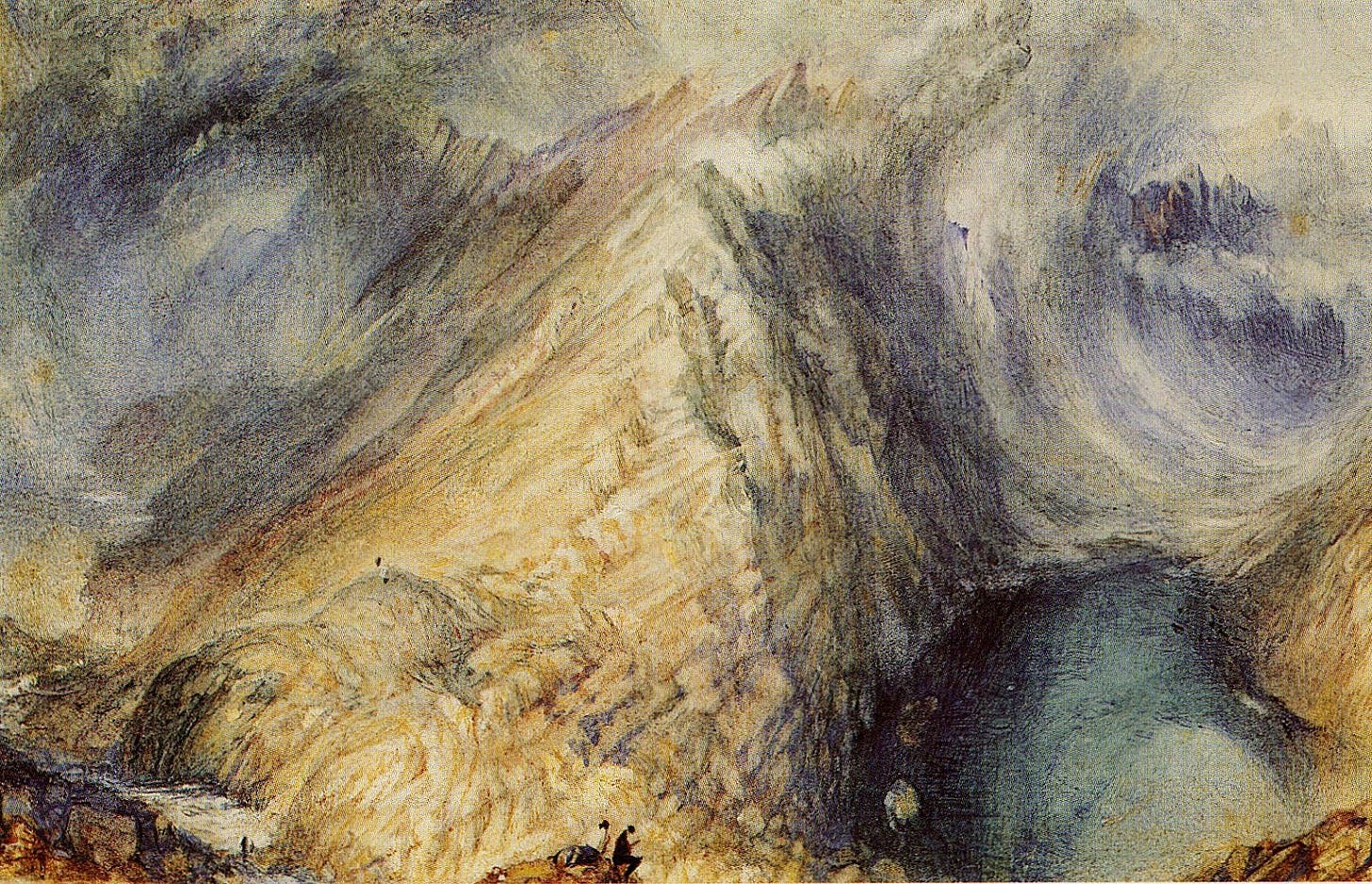
The answer's seen – just sometimes – at dawn, on a frozen snowfield, in the Brocken spectre thrown onto the morning mist.
Maybe it is no more than the shadow of ourselves thrown onto a bank of temporary vapour. And maybe, like the Brocken, it is just the darkness of our own ego interrupting the brightness that, as we stand, is shining directly behind us. Or else, just possibly, I am stretching this spectre metaphor beyond the safe loading of a standard nine-millimetre mountaineering trope…
So, okay. It is, in the end, all about the emotions.
Having left Rosthwaite in Borrowdale, on a bright morning in the first week of October, we ascended from Seathwaite to the top of the ridge, called Ash-course, and thence beheld three distinct views.... But how shall I speak of the deliciousness of the third prospect! At this time, that was most favoured by sunshine and shade. The green Vale of Esk—deep and green, with its glittering serpent stream, lay below us; and, on we looked to the Mountains near the Sea,—Black Comb pre-eminent,—and, still beyond, to the Sea itself, in dazzling brightness. Turning round we saw the Mountains of Wastdale in tumult; to our right, Great Gavel, the loftiest, a distinct, and huge form, though the middle of the mountain was, to our eyes, as its base.3
They could do it in the 18th century. And away from the UK, it seems.
“As a mystic might worship an ideal of the divine, we looked up to the beauties of the mountains.”
Maurice Herzog 'Annapurna' 1951.
Oh my word, Maurice, you’re making me blush. Us Brits don’t say stuff like that.
J'entendrai encore dans le lointain la musique terrible et chère qui frappa mon âme dans les jours de bataille: sifflement de pierre et crépitement de glaciers, hurlement de vents et d'avalanches; et, dans ce concert, la petite voix de l’homme hardi, les rapides appels des guides, les coups secs du piolet qui taille, la voix sure et les trilles de joie qui se perdent dans l'air. Et des pentes scintillantes, des vastes champs de neige et des cimes pures, les heures du passé descendront vers moi dans l'ombre.
Guido Rey Alpinisme acrobatique 1935.I shall hear again in the distance the beloved and terrible music which beat against my soul in those days of struggle: the whistling of falling stones and the crackling of the glacier, the shrieking of the winds and the avalanches; and, in this orchestra, the voice of the tough little human climber, the rapid cries of the guides, the dry blows of the iceaxe cutting steps, the steady voice and the warbles of joy which lose themselves in the air. And from those glittering slopes, the great fields of snow and the pure white summits, the hours of the past come to me down in the shadows.
Maurice Herzog and Guido Rey don’t show any British stiff-upper-lip—they don’t need to, because of being French. Though there is the exception that tests the rule: Scottish mountaineer WH Murray. Here he is on the summit of Ben Nevis, in the snow, in the dark:
When we walked across the plateau, it became very clear to me that only the true self, which transcends the personal, lays claim to immortality.4
Which, we’re prepared to forgive him this on the basis that his book was written on toilet paper, with a stub of pencil, crouched over the latrine in a German prisoner-of-war camp…
So – the tradition of English Romanticism – the tradition of Wordsworth, Coleridge and Shelley – does it live on in the mountain-themed writing of today? And if it does, is this a Good Thing?
The limp-penis-with-stiff-upper-lip approach of the late Victorians: yes, we’re glad that’s over. But then again there are times when I’ve had quite enough of William Wordsworth’s big idea: that the proper subject for a poem is the terrifically interesting inner life of William Wordsworth. That influence trickling through to today when my TV showed me a media mountaineer self-interviewing in his tent, tearfully exploring his inmost feelings about the fact that one of his companions has just got killed by an avalanche. This does seem to me a sorry way to earn a living.
Meanwhile, in parallel, that other great idea of Coleridge and the Wordsworth siblings is also on the up and up. That walking across the Lakeland fells, in the rain, is what life on this planet is really all about.
“We so far forgot ourselves as to shake hands”—Bill Tillman on achieving the first ascent of Nanda Devi in 1934.
Xenophobic and also out of date: this elevation of the emotions is the new Britishism as well.
Dorothy Wordsworth, first recorded ascent of Scafell Pike, 1818. More about her and her friend Mary Barker here:
Ladies of Lakeland
The first walkers up onto the Lakeland fells were shepherds and small farmers from the surrounding valleys. But the first ones up there just for fun, and writing about it afterwards, were the Romantic poets Samuel Taylor Coleridge with William and Dorothy Wordsworth. And Dorothy’s example meant that, right from the start, fellwalking was never going to …
WH Murray ‘Mountaineering in Scotland’, currently published in a single volume with the follow-up ‘Undiscovered Scotland’. Up there with Coleridge, Leslie Stephen and Gaston Rébuffat as one of the great mountain writers.



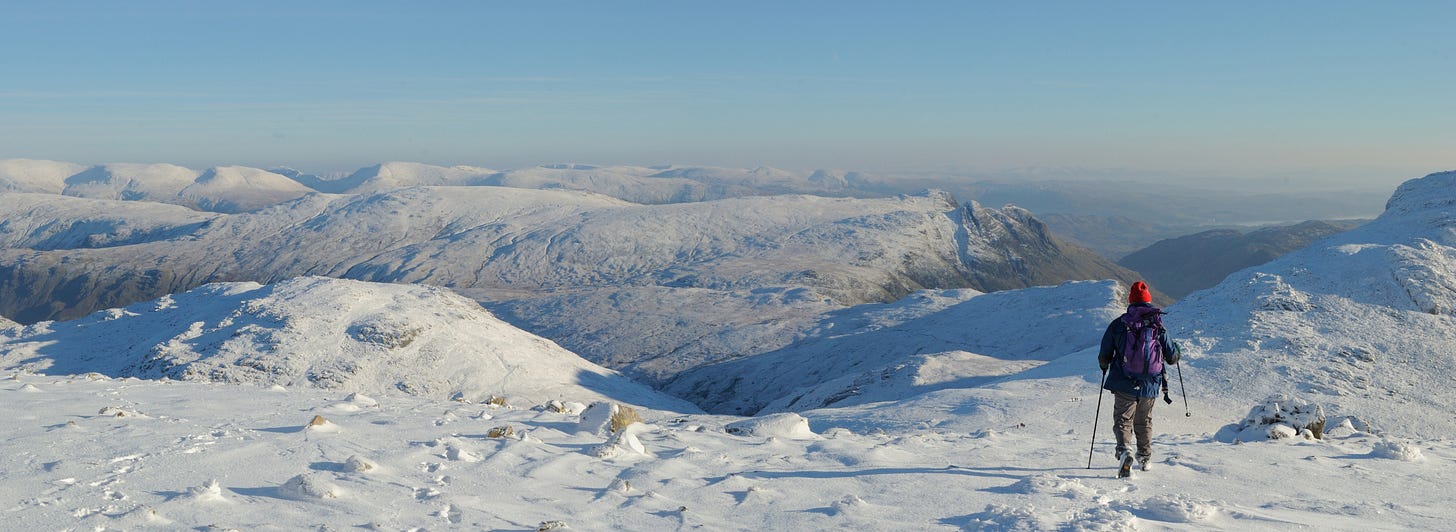
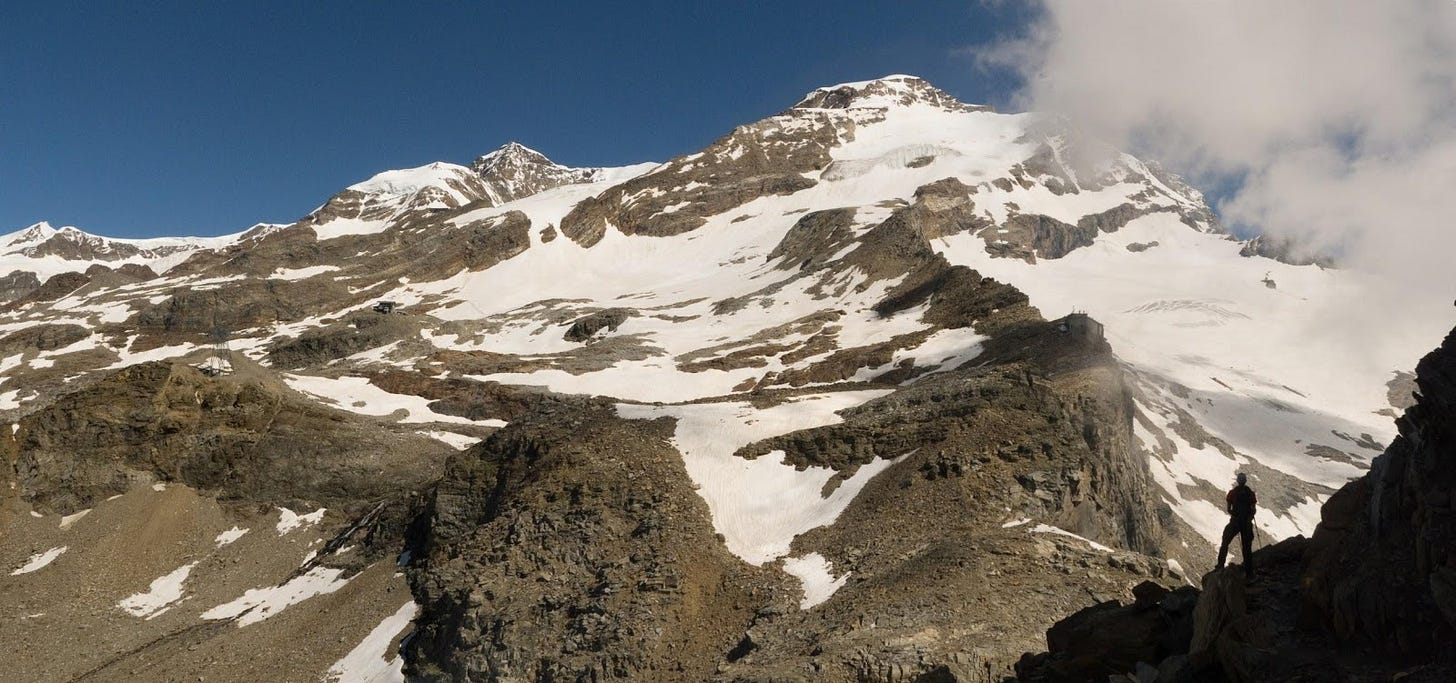
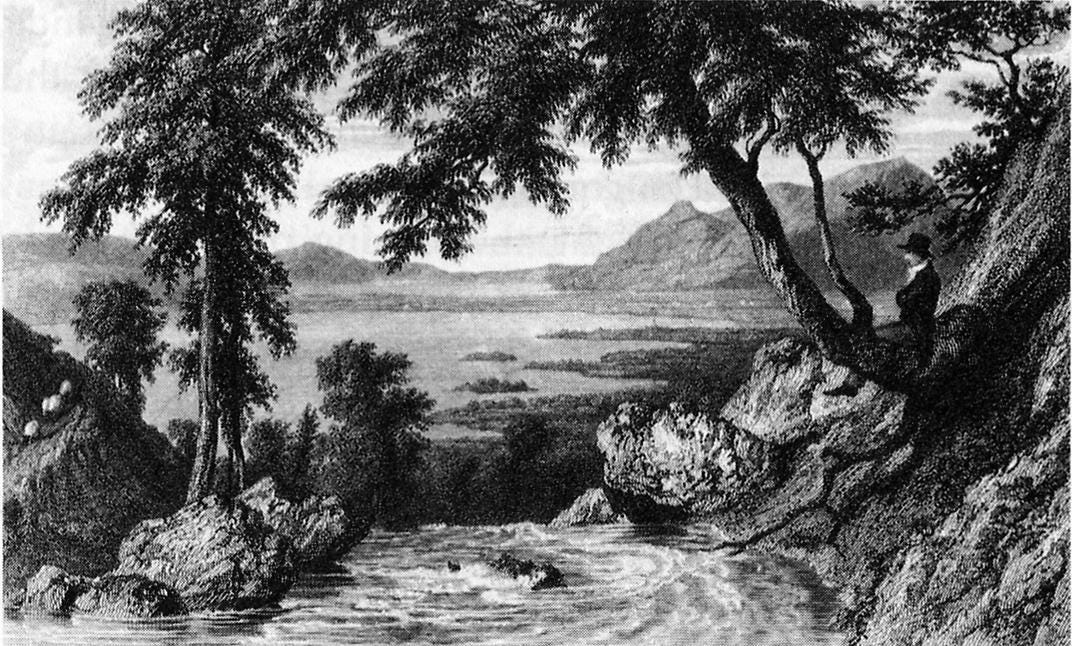
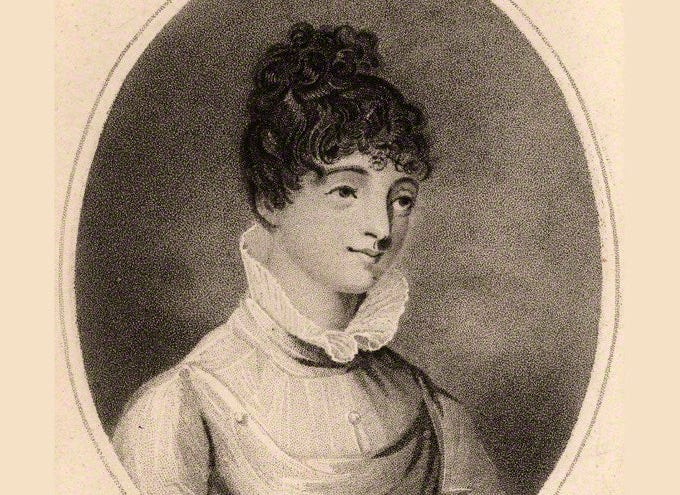
hmmm, what to say, Tilman and Shipton's handshake has gone down in history. I don't think I've ever done it. Indeed, summit's aren't always necessary, but when they are, nowt better than collapsing in a heap on arrival and, if it's been a hard or good climb and the weather and time of day permits it, enjoying the view, a brew, some grub, and sharing memories of the climb before descending.
I forgot to add on the first English Romanticism but it's relevant here! I think you are one of very few, in fact, I cannot remember any, to talk about the Wordsworth siblings. The only mention of Dorothy I came across was, ah yes she was with W when exploring the Quantocks, and she may scribbled something... I'm so happy to see her being at last spoken about! And yet. Ah! The Loch Coruisk! It stole my heart and along with the Hebridean geology will definitely be the main reason for my moving to Scotland!